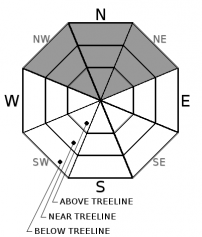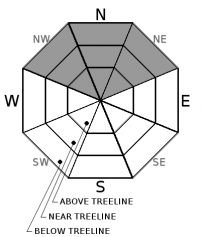| Wednesday | Wednesday Night | Thursday | |
|---|---|---|---|
| Weather: | Mostly cloudy | Cloudy with isolated rain showers in the evening precipitation becoming widespread after midnight. Snow levels between 8000 and 8500 ft. | Mostly cloudy with scattered showers. Snow level 8000 ft. |
| Temperatures: | 48 to 53 deg. F. | 34 to 40 deg. F. | 42 to 48 deg. F. |
| Mid Slope Winds: | South | South | South |
| Wind Speed: | 10 mph | 10 mph | 10 to 20 mph |
| Expected snowfall: | 0 | Rain: .1-.25 | Rain: up to .1 |
| Wednesday | Wednesday Night | Thursday | |
|---|---|---|---|
| Weather: | Mostly cloudy | Cloudy with isolated rain/snow showers in the evening. A mix of rain and snow becoming widespread after midnight. Snow level 8000 to 8500 ft. | Mostly cloudy with scattered snow showers. Snow level 8000 ft. |
| Temperatures: | 45 to 50 deg. F. | 31 to 37 deg. F. | 34 to 40 deg. F. |
| Ridge Top Winds: | South | South | Southwest |
| Wind Speed: | 15 to 25 mph with gusts to 35 mph | 20 to 35 mph with gusts to 40 mph increasing to 65 mph after midnight | 25 to 35 mph with gusts to 75 mph decreasing to 65 mph in the afternoon |
| Expected snowfall: | 0 | Rain: up to .25 in. | Snow: up to 1 | up to 1 |


























